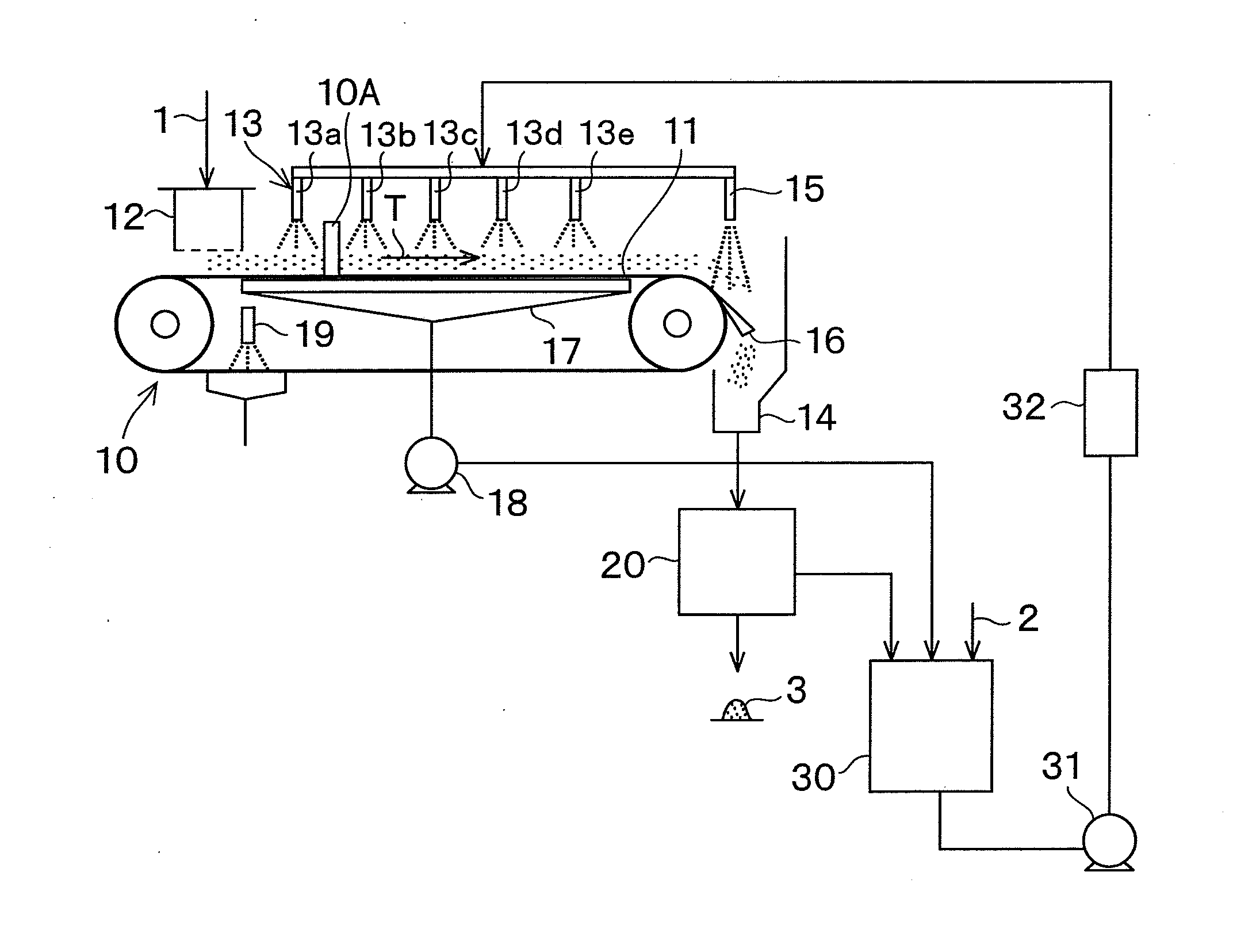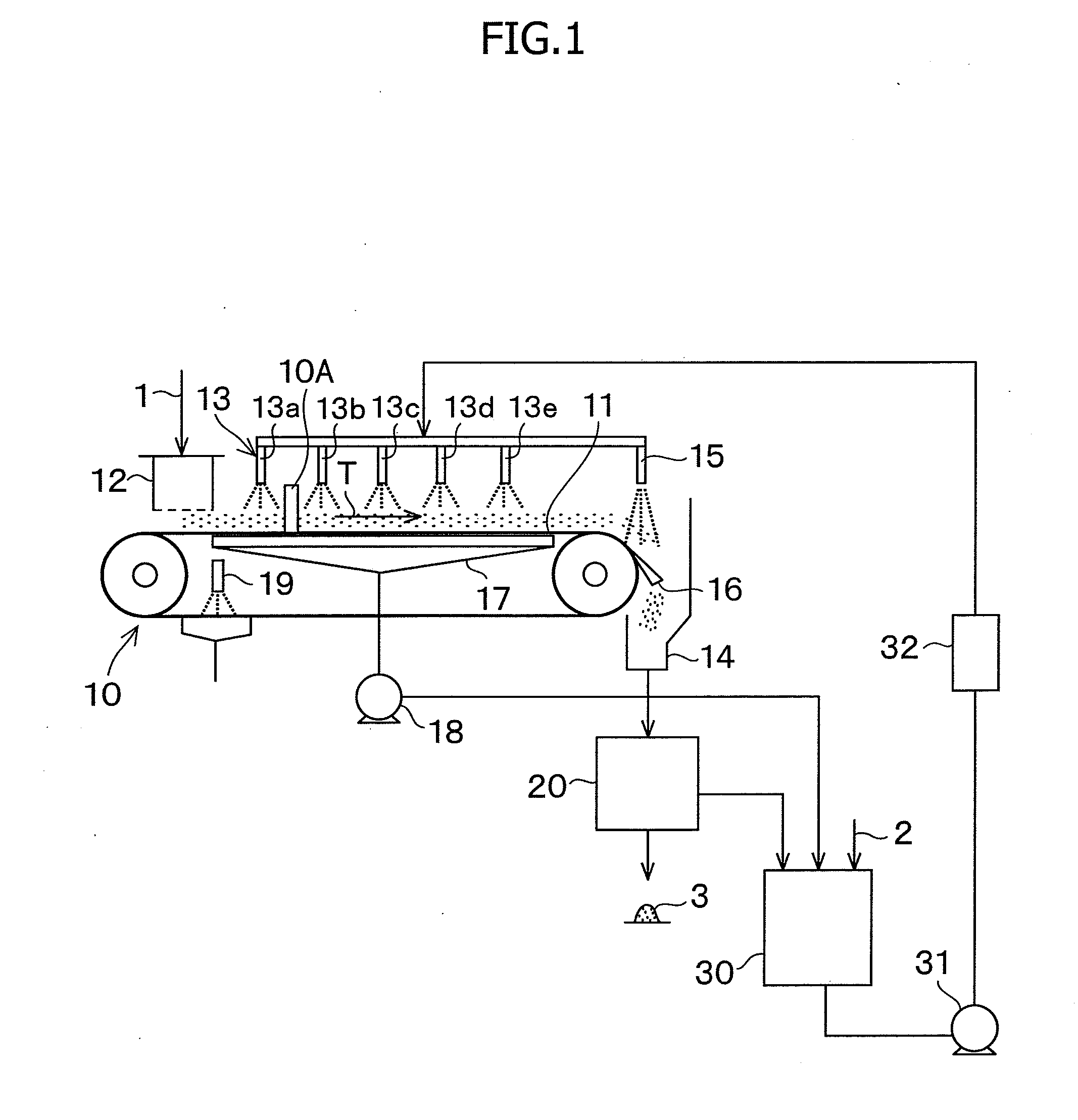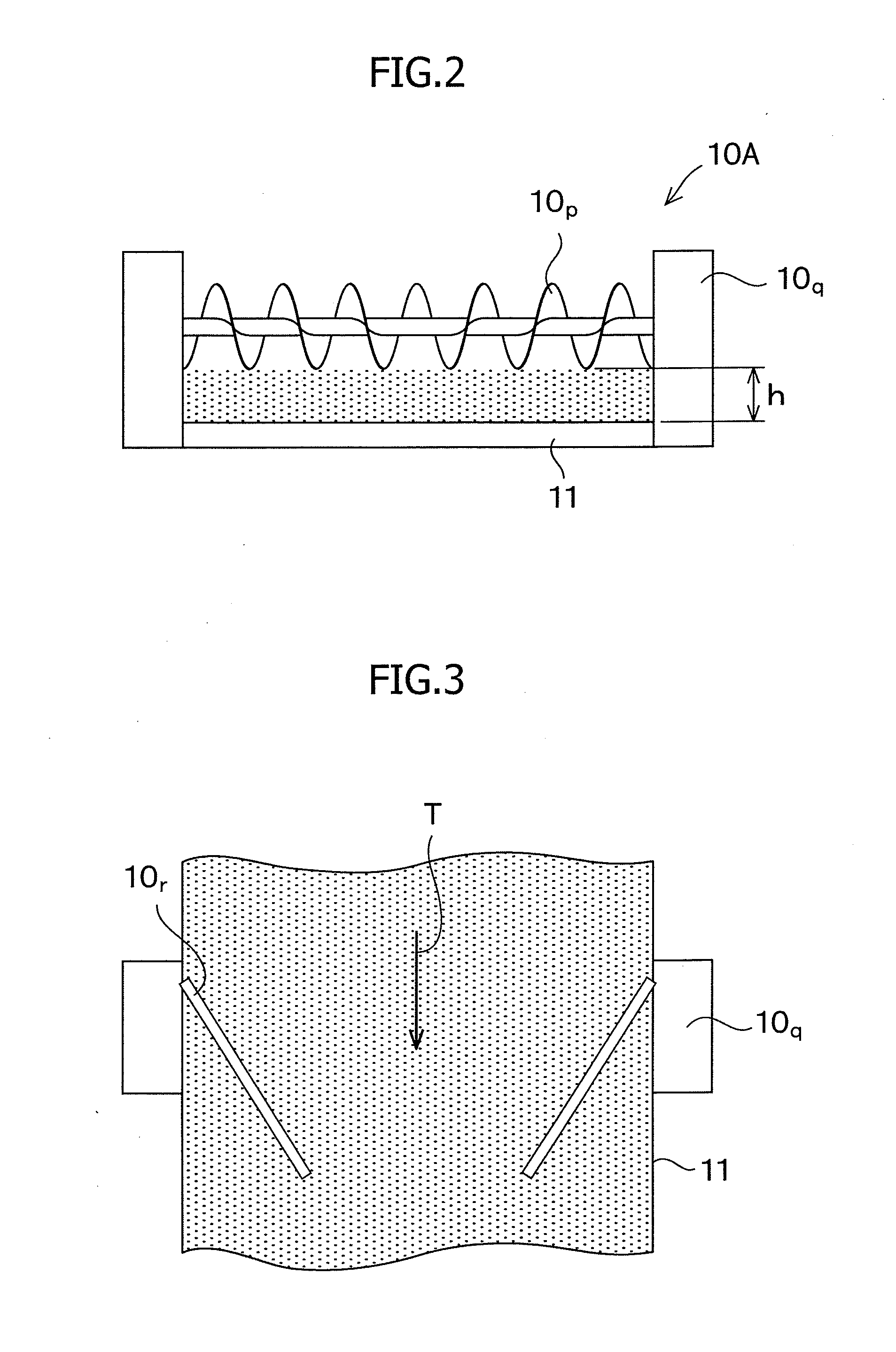Methods for preparing alkali cellulose and cellulose ether
- Summary
- Abstract
- Description
- Claims
- Application Information
AI Technical Summary
Benefits of technology
Problems solved by technology
Method used
Image
Examples
example 1
[0066]Pulp chips derived from wood and having a solid component concentration of 93% by weight, each of the chips being of 10 mm square, were introduced at a rate of 60 kg / hour to one end of a horizontal belt type vacuum filter of 0.2 m wide and 1.0 m long. As a filtering material, a perforated metal belt having a thickness of 1 mm and holes with a diameter of 2 mm was used. The moving speed of the belt was 0.025 m / s. Spraying nozzles were provided at 0 m, 0.2 m, 0.4 in, 0.6 m and 0.8 m in the moving direction and 2 cm, 6 cm, 10 cm, 14 cm and 18 cm from one end on a straight line in the width direction. An aqueous 49% by weight sodium hydroxide solution of 40° C. was sprayed at a spraying rate of 120 L / hour per nozzle. At the same time, the aqueous 49% by weight sodium hydroxide solution which had passed through a cake layer was suctioned from a filtration plane. Screw type leveling devices, each having a function of controlling a height level and gathering a contact product between...
example 2
[0069]Alkali cellulose was prepared in the same manner as in Example 1 except that the moving speed of the belt was 0.033 m / sec, a Wade type leveling device was used instead, and a screw discharge type centrifugal dehydrator having a centrifugal effect of 600 as a drainer was placed at the outlet of the continuous horizontal vacuum filter.
[0070]A weight ratio of the alkali metal hydroxide in the resulting alkali cellulose to the solid component in the pulp was determined by the titration method and found to be 1.00.
[0071]The alkali cellulose (17.2 kg) was placed in a pressure-resistant reactor and after vacuuming, it was reacted with 9 kg of methyl chloride and 1.4 kg of propylene oxide. The reaction product was washed, dried and pulverized to obtain hydroxypropylmethyl cellulose.
[0072]The hydroxypropylmethyl cellulose thus obtained had a methoxy group (DS) of 1.80 and a hydroxypropoxy group (MS) of 0.14. An aqueous 2% by weight solution of the hydroxypropylmethyl cellulose had a vi...
example 3
[0073]Alkali cellulose was prepared in the same manner as in Example 1 except that spraying from the spraying nozzles at 0 m, 0.2 In, and 0.4 m in the moving direction was omitted and an extrusion plate type centrifugal dehydrator with a 0.2 mm slit screen having a centrifugal effect of 600 as a drainer was placed at the outlet of the continuous horizontal vacuum filter.
[0074]A weight ratio of the alkali metal hydroxide in the resulting alkali cellulose to the solid components in the pulp was determined by the titration method and found to be 0.70.
[0075]The alkali cellulose (18.8 kg) was placed in a pressure-resistant reactor and after vacuuming, it was reacted with 9 kg of methyl chloride and 2.5 kg of propylene oxide. The reaction product was washed, dried and pulverized to obtain hydroxypropylmethyl cellulose. The resulting hydroxypropylmethyl cellulose had a methoxy group (DS) of 1.45 and a hydroxypropoxy group (MS) of 0.20. An aqueous 2% by weight solution of the hydroxypropylm...
PUM
| Property | Measurement | Unit |
|---|---|---|
| Weight ratio | aaaaa | aaaaa |
Abstract
Description
Claims
Application Information
 Login to View More
Login to View More - R&D
- Intellectual Property
- Life Sciences
- Materials
- Tech Scout
- Unparalleled Data Quality
- Higher Quality Content
- 60% Fewer Hallucinations
Browse by: Latest US Patents, China's latest patents, Technical Efficacy Thesaurus, Application Domain, Technology Topic, Popular Technical Reports.
© 2025 PatSnap. All rights reserved.Legal|Privacy policy|Modern Slavery Act Transparency Statement|Sitemap|About US| Contact US: help@patsnap.com



